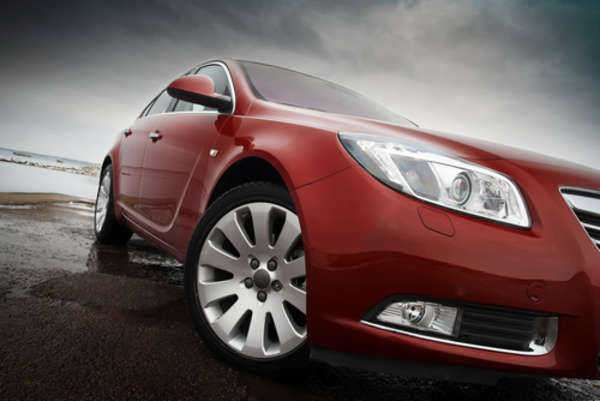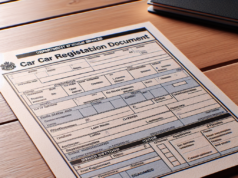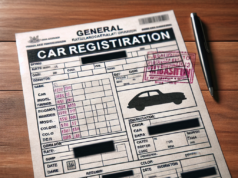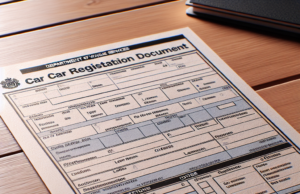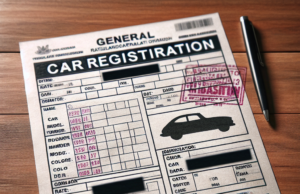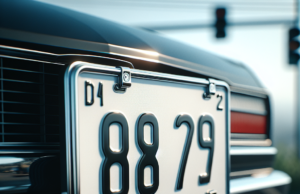When you buy a car, it is usually a person’s second most expensive purchase, after purchasing a home. The National Automobile Dealers Association states that the average price of a brand new car purchased in the United States is $28,400. Because buying a car is an expensive endeavor, you must go about the process carefully and practically to get the best results.
How to Buy a Car: Research
Before you begin buy a car, whether new or used, you need to do first do some research on what the best options are. With some preparation, you will be in a much better position to find the best deal when you buy a car.
Figure Out Your Needs Before You Buy a Car
Before you buy a car, you should consider what you will use your car for. For example, will you be driving to work or school, just running errands, or driving long distances? Think about how many miles you typically drive in a week, what sort of road conditions you will be usually driving in (rural roads, city streets, highways, etc.), how many people will usually be with you during these trips, and what sort of weather conditions you will most likely drive in (warm and sunny, snowy winters, rainy weather).
Understand Your Credit Before You Buy a Car
Before you start browsing for either your car or your car loan, you should first get a credit report. You are entitled to a free credit report once every 12 months from all of the national consumer credit reporting companies, Experian, Equifax, and TransUnion. To receive these credit reports, you can go to annualcreditreport.com or call 1-877-322-822. If you need more than one from a specific reporting company within a 12 month period when you buy a car, you will be charged a small fee to receive your score.
Preapproval for a Car Loan Before You Buy a Car
Before you go out and buy a car, you should browse around for a car loan. You can go to your local credit union or bank and apply for a preapproved car loan. When you visit different lenders, make sure to compare financing offers to the offer provided by the dealer. Sometimes, your bank or credit union will offer better loan terms than a dealer. When you understand exactly what you can afford when you buy a car and the interest rate and terms you qualify for, you will be in a much better position to negotiate the price on the car.
When you apply for a car loan and buy a car, a good credit score will help you qualify for better interest rates on your loan. When you know what your credit score is, you will have a better idea of what is a fair interest rate and from there you can negotiate the price of the car with the dealer. If you do not have a credit history, some banks or dealers may apply a higher interest rate for a loan to help you buy a car. However, it is best to still browse around. Many credit unions and banks have special programs to assist you in establishing your credit history.
You may be considering asking a relative or friend to be a co-signer on your loan in order to help you qualify for a lower interest loan so you can buy a car. Be careful about doing so. It is ideal to avoid joint ownership of a vehicle. The co-signer will also be responsible for making car payments if you are unable to make them and both you and the co-signer will both be listed on the car’s title after you buy a car.
How to Buy a Car: Cost of the Car
When you buy a car, many different factors will affect the final cost of a car, such as buying used or new, or deciding to lease. Other expenses will also add to the maintenance expense over the life of the car, such as gas, insurance, taxes, mileage, and other expenses. There are different resources that will help you research the cost before you buy a car:
• Consumer Reports publications that provide car ratings based on maintenance costs, safety, gas mileage, and reliability. These publications are published monthly and are often available in the resource section of the public library.
• Kelley Blue Book, which is available online at kbb.com and often available as a hard copy in many local libraries. This reference provides prices of used cars of a particular model with a specific mileage.
• Your local newspaper to see out what rates local car dealers are offering for specific models.
Buy a Car: Choosing New or Used Cars
While a new car may seem to have more advantages to buy, you should still consider used cars. There are positives and negatives regarding costs in both new and used cars.
New Cars
• Positive: Has never been previously driven; may have new safety features or other attractive features; comes with a factory warranty.
• Negatives: More expensive; extra features are not always affordable; vehicle quickly loses value
Used Cars
• Positives: More affordable; may come with dealer warranty; may be able to afford vehicle with all the extras; any safety concerns may have already been acknowledged and fixed.
• Negatives: May need a higher down payment; cars sold “as-is” may not have warranty and may have previously damage.
Buy a Car: Other Expenses
When you buy a car, there are also other expenses you will have to consider:
Car Insurance
Car insurance (usually liability insurance) is needed and must be considered when you have to buy a car and plan a budget. Many different factors, such as the type of car you buy and personal qualities such as age, can also affect the cost of your particular insurance policy. You should make sure to check with your current insurance agency to find out what your insurance rates will be when you buy a car before actually purchasing it.
Miles per Gallon and Fuel Economy
Gas will be a very large expense over the life of your car. Before you buy a car, you should consider the grade of fuel the car needs (for example, premium-grade gas is much more expensive over the life of the car). Be sure to also compare the miles-per-gallon for whatever car you are considering purchasing.
Maintenance costs
Normal expenses when you buy a car include brakes, new tires, fluids, new batteries, tune-ups, repairs, and car washes. You may be able to save some money on these expenses if you learn just how to take care of some of the basic things by yourself, such as replacing belts, changing a flat tire, or changing the oil. You can read your car owner’s manual for more maintenance and money-saving suggestions before you buy a car.
Tax, License, and Registration Fees
Your local Department of Motor Vehicles or County Clerk/Recorder Office can give you a better idea of the fees and taxes needed for your car and what sort of identification you will need to provide when you buy a car. Some states may charge registration fees and taxes ever year. You might also be required by local laws to get a smog or emission test. All states’ motor vehicle departments require some form of official identification, such as a state identification card or a driver’s license, before they will register a car. Certain states will also require proof of legal residence in the United States as well before you can buy a car and register it.
How to Buy a Car: Financing Your Car
Depending on the price of the car you wish to buy and your finances, you may either borrow money from a bank or credit union or pay for the car in cash. Most individuals will need to get a car loan in order to buy the car. There are many different places to look for the right car loans: credit unions, banks, loan brokers, online direct lenders, car dealerships, and finance companies. Remember that you need to browse for financing deals the same way you do when you buy a car. You must understand the components of a car loan and look out for the best deal.
Look for a car loan before you visit the dealer to buy a car. Make sure to compare the terms and interest rates of the loan the car dealer offers you in comparison to your preapproved loan from the credit union or bank. Do not let a car dealer talk you into choosing their financing unless it the terms actually provide a better deal.
You should also be aware of car dealers that guarantee you a better interest rate on your loan after you sign the necessary paperwork to buy a car. This is usually a trick. After signing the paperwork, the dealer will tell you a few days later that unfortunately they are unable to give you the terms that you agreed to instead you will have to you come back in order to sign another contract that has even worse terms to buy a car. This practice is known as “yo-yo” financing, and while it is not illegal, it is unethical and can result in you paying much more than is necessary.
Buy a Car: Components of a Car Loan
Car Loans are designed for individuals who want to finance a car for personal use since they do not have the money available to purchase the car. A car loan can provide you with the immediate use of the car in exchange for regular payments on the loan over an agreed period of time. Here are some components of a car loan you should be aware of when you buy a car:
Down payment: Having some money saved up to use as a down payment on your car loan can greatly reduce your loan amount. A down payment will also help you lower your interest rate, which will save you a lot of money over the length of the loan. While it is possible to find a good auto loan that only requires a low down payment, such as 5%, it is better to put down as much money as you can, ideally at least 20%. Putting down a higher down payment drastically reduces the amount of money you will have to borrow, which results in lower monthly payments and a lower total of interest you will have to pay overall.
Length of Car Loan: The number of payments you will have to make before the loan is completely paid off affects your total purchase price as well as your monthly payment amount. By having a shorter loan term, it will result in the cost of your monthly payments to go up since you are choosing to pay your loan off sooner. While the payments themselves will be more expensive, you will end up saving money since you will pay less interest throughout the life of the car loan.
Interest Rates: Your auto loan interest rate is often determined by your credit history and your credit score. If you have a good credit score, you will be offered a lower interest rate on your car loan. If you have a bad credit score, your interest rate will be much higher. Other factors will also affect your interest rate, such as the size of your initial down payment.
Annual Percentage Rate: Your Annual Percentage Rate, or APR, includes your interest rate and the fees you are also financing with your loan. When you buy a car and you shop for auto loans beforehand, make sure to compare the annual percentage rates, which will you a more reasonable idea of the actual cost of the car loan.
You should make sure that you can afford your monthly car payments before you sign a contract. You should also make sure that the monthly payment you are quoted is the final monthly payment listed in your contract. Any extra features and options can substantially increase the final monthly payment for your car loan.
To get an idea of your monthly payment, the financial experts at Consumer Reports recommend that your total payment should not be any more than 36%of your total gross income. If you follow this rule, you can determine how much you can afford to pay on your loan by taking these steps:
• Calculate what 36% of your total gross monthly income is
• Total and itemize all your monthly payments, including your credit card bills, rent or mortgage, and any other installment loans you may have
• Subtract your monthly payments total from the 36%
By being aware of your down payment and your monthly payment, along with the typical interest rate and term you can handle, you can more easily calculate the total price of the vehicle that you will be able to afford as well as the loan amount for which you will need to qualify.
Buy a Car: Choosing the Vehicle Type
Now that you have an idea of what sort of financing you should expect before you buy a car, you can think about what sort of vehicle you want more in depth. Your goal is to find car models that exceed in the areas that are important to you. Here are some important considerations and explanations that you should consider.
Buy a Car: Choosing the Right Model
When you plan to buy a car and you figure out your price range and what type of vehicle you want, you can now start to narrow the possible choices to a few potential models that you want to test drive. To do this, you should gather as much information possible about each vehicle and compare them in different important areas, like reliability, fuel economy, driving experience, safety, owner experience, and features.
When you buy a car, you should check out model reviews of each possible car. You should read reviews from sources you trust that discuss a vehicle’s qualities, such as how it accelerates, brakes, and handles, how user-friendly and comfortable is the interior, and what deficiencies the vehicle may have. You can check out different consumer reports for full reports and reviews, as well as different newspapers and magazines which provide helpful reviews.
Buy a Car: Consider Reliability
Reliability ratings can explain well certain models compare to others, and the chances of you experiencing problems with your vehicle. The reliability of a vehicle can affect how happy you will be over the years with a car, and can significantly influence the resale value once you are ready to replace it. Reliability can be an expensive and difficult quality to evaluate, since the information has to come from vehicle owners. Many different sources provide reliability information to consumers based on surveys.
Buy a Car: Safety Ratings
There are many different elements that can affect the overall safety capability of a vehicle. Here are some important ones you should consider:
Crash tests
Front, side, and rear impact crash tests are performed by the Insurance Institute for Highway Safety as well as the National Highway Traffic Safety Administration. Both provide crash-test ratings for specifically tested models online. They also provide previous results up to ten years old. The Accident avoidance
A vehicle’s ability to help you prevent or avoid an accident is also very important. Many different factors contribute to the accident-avoidance capability, the two most important being emergency handling and braking.
Rollover resistance
Rollover accidents account for around 33% of all vehicle-occupant deaths. The National Highway Traffic Safety Administration provides a 5-star rating system named the Rollover Resistance Rating. It is based on a vehicle’s static stability factor, which is basically how top-heavy the vehicle is, and the dynamic rollover test, which is a simulation of a driving making a series of sharp steering actions.
Rear-impact protection
Although rear-impact collisions have a fairly low fatality rate, they result a high injury rate, particularly for whiplash neck injuries. The Insurance Institute for Highway Safety institute conducts tests of head restraints and also performs dynamic rear-impact tests which measure how well the head/seat-restraint combinations in different vehicle models protect against whiplash injuries.
Blind zones
Many accidents are the result of the driving missing something in their blind zones while driving. Larger vehicles, such as pickups and SUVs also have larger blind zones. To check a blind spot of a vehicle, sit in the driver’s seat of the vehicle that is parked and have someone stand in back of the vehicle and hold out a his or her hand at waist level. Have the person slowly walk back until you can see their hand through the rear window.
Buy a Car: Initial Inspection
When you go to the dealership to buy a car and greet the dealer for the first time, you should explain that you only wish to inspect and test drive any choices, but you do not plan to purchase anything that day. Resist the dealer’s attempts to lure you into a purchase. You can then focus on simply inspecting the vehicle.
Before you buy a car, take some time to look at the interior and exterior of the vehicle. Look at the seams between the doors and the body panels for any gaps or irregularities. Make notes of the smoothness of the paint and what colors look good. Next, look at the interior design of the vehicle. Consider how quiet and comfortable the cabin is and whether the controls are convenient to operate. Consider how easy it is to slip in and out of the car and how convenient the doors are to handle. Check out the upholstery that you intend to have and how comfortable it is. Adjust the seats and see if you can find a comfortable conformation. The seatbelt should be easy and comfortable as well. Adjust the steering well and decide on how you feel about your driving position. Check your visibility and make sure you can easily see the instrument panel and all directions while maintaining a comfortable position.
You should check for sufficient storage spaces for your personal items such as cell phones, mp3 players, or anything else when you buy a car. Check if used cup holders block important switches or block anything important such as air conditioning bents. Try out the audio system and compare its quality as well as other electronic systems like voice-activated controls or in-dash navigation before you buy a car.
After getting comfortable in the driver’s seat, sit in the other seats to see how comfortable they are. Look for any three-point safety belts for all seats, adequate cup holders, fold-down armrests, storage spaces, or ashtrays. Ensure that a child seat can be easily secured if you need one and how easy it would be to take a child out of the car before you buy a car.
Next, you should inspect rear cargo compartment or trunk. Check the opening mechanism, whether it needs a key or just a grab handle or remote control operated. Once the trunk is open, take a look at the hinges it has and whether they swing into the cargo area, which can damage items in the trunk. Consider how difficult it would be to load items into the cargo area before you buy a car.
Lastly, request to see the important service points in the engine compartment before you buy a car. You should easily find the dipsticks and fluid filler caps as well as the battery terminals.
Buy a Car: Test Drive
Ideally, you should test drive all potential vehicles on the same day on the same or similar streets in order to make good comparisons between vehicles before you buy a car. You should start by considering what you like and dislike about driving your current car regarding comfortable, features, performance, controls, and any other things you may not like. You should then plan your own route where you can experience different traffic situations such as rough city streets or high-speed freeways if they are a daily routine for you.
Once you decide on your route and what to look for before you buy a car, call the dealership to confirm the vehicle can be test-driven with certain features and schedule your appointments for the vehicles you wish to drive back to back. You must make sure to bring verification of car-insurance, something to record your observations with, a list of what you like and dislike with your current car, and what configuration you want for the cars you try. If you use child seats, bring those along to be test whether you can easily secure them in each vehicle.
Once you actually start the test drive before you buy a car, you should consider how the ride feels. Consider if the drive is smooth or harsh, whether the suspension isolates you from the road, how comfortable the ride is, what sort of acceleration is available, if the brakes are responsive, if the car responds nicely to steering maneuvers, how quiet the vehicle is, what sort of visibility you get, and what sort of visibility you get at night.
After the test drive, the dealer will most likely urge you into starting the buying process. At this point you should consider the dealership and whether you would want to buy a car from them. You should evaluate how responsive the dealer was to questions, whether you were treated with respect, if you got helpful and honest answers, and whether you were invited for any additional test drives before you decide to buy a car from a particular dealership.
Buy a Car: Figuring out Pricing
You should first decide on a target price that you can reasonably hope to attain after negotiating. When you first look at a car at a dealership, there will be a sticker that shows MSRP, and the cost of different options and the destination charge. Usually, you can negotiate a lower price without much resistance. You should not rely on the sticker price for a starting point when you buy a car.
Your target price should be somewhere between what dealership paid the manufacturer and the figure shown appears on the sticker. If you know the dealer’s cost, you can figure out what profit margin he or she can work with. Your target price should allow some space for a reasonable profit to the dealer. You can do this by find the dealer-invoice price and subtract any current dealer sales incentives along with the holdback amount from the figure. A reasonable price is around 1 to 5% over the dealer’s cost. If the model has not sold well, which can be indicated by frequent rebates or special financing, you may be able to buy a car for even less.
The best way to go about reaching your target price when you buy a car is to first come in prepared with the proper research about your target price. You can then work to negotiate one thing at a time. You should first make it clear that you wish to get the lowest markup possible and that you intend to visit other dealerships to compare prices. After settling on an initial price, discuss leasing, financing, and trade-ins if necessary and do so individually. Arrange financing in advance so that if the dealer offers you certain financing options, you can compare them to your preapproved options and determine which is better. You should also avoid paying for any extras that you do not need, such as paint protectant or rustproofing.
Buy a Car: Understanding the Auto-Pricing Terms
Here are some pricing terms that you will come across when you are looking at prices of vehicles.
On the window sticker:
• MSRP or Manufacturer’s Suggested Retail Price: The vehicle’s published base retail price, without any options, destination charge, fees. This is only “suggested” so you may buy a car at other amounts.
• Optional equipment: Additional features or packages that can cost extra which are usually limited to interior, transmission choices, and paint. These prices can often be negotiated.
• Destination charge: Covers cost of delivery to the dealership from the factory which is usually non-negotiable fee.
• Market adjustments: An additional fee added by the dealer, usually to vehicles that are in high demand. While you can negotiate, you may not be as successful if the vehicle is selling and the dealer does not have an incentive to work with you.
• Sticker price or Total price: Total retail price including the MSRP, any options, the destination charge, and market adjustments. A salesperson will usually try to sell the vehicle as close to this price as possible.
Not on the sticker:
• Rebate: A rebate is a direct-to-buyer incentive to buy a car from the manufacturer. Disregard it when negotiating since it comes from the manufacturer.
• Dealer incentives: The money the manufacturer pays the dealer when he or she sells certain, models. It can be passed to the buyer as a price reduction, or kept as dealer profit.
• Holdback: Most manufacturers provide dealers a percentage of the MSRP as a refund after selling a vehicle, usually around 2 to 3%.
Buy a Car: Closing the Deal
After you decide on a car and you take care of negotiations, you are ready to purchase the vehicle. Before you give over your credit-card number, it is important to have the dealership send over the final contract to you so that you can review it ensure that everything is correct, such as the model of the vehicle, the trim, and any options that you want. Make sure to carefully check all the numbers found on the agreement. You will notice some other charges including the following:
• Destination charge
• Title and registration fee
• Documentation fee
• State sales tax
• Advertising fee
While these fees are not negotiable, there are others you can avoid paying such as:
• Extended warranty
• Advertising charge
• Dealer preparation fee
• Additional dealer markup
• Disability insurance
• Credit life insurance
• Rustproofing/undercoating
• Pinstriping
• Fabric protection
• VIN etching
• Security/anti-theft system
• Paint sealant
Buy a Car: After the Sale
After the sale, you will still need to make sure you have insurance on your car. Many people stay with their same insurance carrier without shopping around for a better deal. It is best to be proactive and compare premiums at least once a year to see whether you can get better, more affordable insurance.
In order to get a more accurate insurance quote, you will need to give information on the vehicle including the model, make model, trim line, year, and the vehicle identification number. You will also have to provide the sex, age, and recent driving record of any potential drivers. The insurance policy must cover bodily injury liability, property damage, and uninsured and underinsurance motorist insurance coverage. You can also choose to include collision and comprehensive, personal-injury protection, medical-payment protection, roadside assistance, and rental reimbursement in your insurance policy.
Buy a Car: Picking up your Vehicle
After you buy a car and your vehicle is ready, give it a full inspection before you drive off the dealer’s lot. If you notice any problems, you should immediately address them. You should not consider the process of buying a car complete until you have completely checked out the vehicle and you are fully satisfied with the vehicle’s condition. Go over the vehicle thoroughly, both the interior and exterior. If you find any issues, you should fix them before taking the car or if they are just minor issues, set up a firm date to have them fixed with the dealership. Here are some helpful hints for inspecting the vehicle:
• Inspect your vehicle during bright daylight to avoid missing small defects when it is dark.
• Ensure the vehicle has all the accessories and options you ordered and that they all work.
• Inspect the outside for dents, mismatched body panels, scratches, or paint defects.
• Inspect the inside of the car for improperly fitting or loose trim or stains and other defects in the carpeting, upholstery, or headliner.
• The odometer should have a very low mileage, from a few test drives.
• The salesperson should show you how to work the controls and help you find the common maintenance items (like the oil-filler hole, engine-oil dipstick, brake-fluid reservoir, etc.)
• IF you see anything else unusual about the vehicle, insist on a full explanation.
